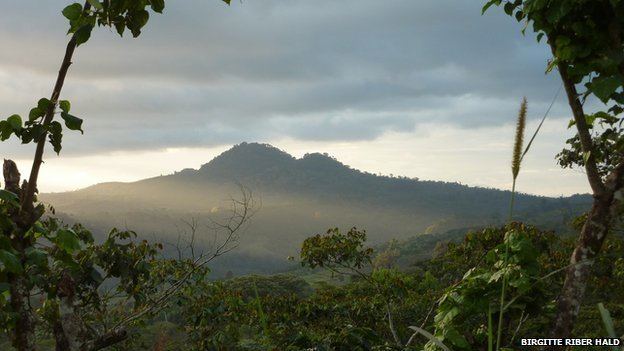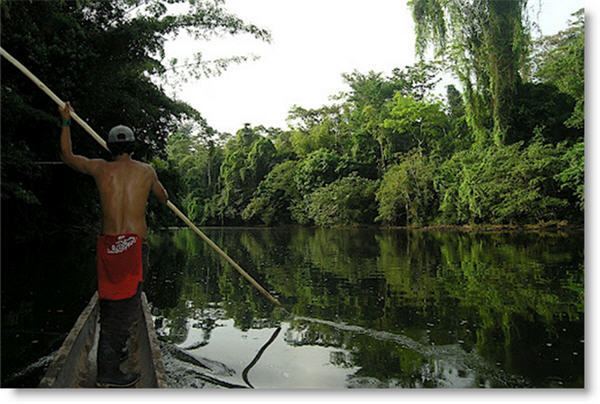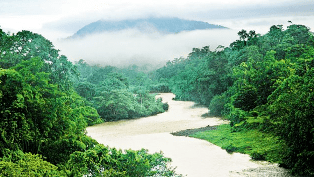 | ||
Similar Indio Maíz Biological Reserve, Los Guatuzos Wildlife R, Chocoyero‑El Brujo Natural R, Cerro Apante Natural R, Corn Islands | ||
The Bosawás Biosphere Reserve in the northern part of state Jinotega (border with Honduras), Nicaragua is a hilly tropical forest designated in 1997 as a UNESCO biosphere reserve. At approximately 20,000 km² (2 million hectares) in size, the reserve (i.e. nucleus plus buffer zone) comprises about 15% of the nation's total land area making it the second largest rainforest in the Western Hemisphere, after the Amazon in Brazil. Bosawás is largely unexplored, and is extremely rich in biodiversity.
Contents

History

The Bosawás Biosphere Reserve evolved from the Sandinista revolution. The subsequent Chamorro government set aside three large reserves, Bosawás being the largest, with its nucleus comprising approximately 7% of Nicaragua's total land area (the rest constitutes the reserve's buffer zone). After the creation of Bosawás it was considered a violation of right of the region's constitutional guaranteed territorial autonomy, of which the Sandinista government granted two autonomous regions of the Caribbean coast for governance purpose.

Bosawás overlaps the homelands of two of Nicaragua's indigenous peoples, the Sumos and the Miskito, in an area which is rich in natural resources, most notably timber and gold. About 130,000 inhabitants practice subsistence farming within the boundaries, about 35,000 of them indigenous Miskito and Sumo people.
Etymology

The name is derived from three natural features: the Bocay River, Mount Saslaya and the Waspuk River. It includes all of Nicaragua's Saslaya National Park. The Cordillera Isabella cross the reserve area, and the Coco River (Río Coco) forms the northern border, the political border with Honduras.
Flora and fauna
About an estimated of 10,000 km² of forest occur in Bosawas.
Within Bosawás live an estimated 100,000 to 200,000 insect species; the number is believed to be higher, however a closer estimate is not possible due to the area being relatively unexplored. The botanical diversity of Bosawás is very high, with vascular plants considered to be in the thousands. Bosawás also has rich taxa of invertebrate and vertebrate organisms. Quetzals and Guacamayas are present in significant numbers, along with the largest and most powerful eagle found in the Americas, the Harpy Eagle (Harpia harpyja). These, however, are just a few of 700 bird species found in the reserve and all over Nicaragua. Pumas and Jaguars, considered powerful consumers of the nutritional chain, are present in the reserve, and Tapirs (Tapirus bairdii) are their favorite prey.

